One problem with working as a photo critic and historian for so many years (46 and counting): hard to turn it off. Forinstance, while reading Steve Martin’s engaging memoir of his years in live comedy, Born Standing Up: A Comic’s Life (Scribner, 2007), I chanced upon a passage that I then discovered has become, if not legendary, at least often enough cited to get treated as received fact:
My final day at the magic shop [in Disneyland, where he worked as a teenager], I stood behind the counter where I had pitched Svengali decks and the Incredible Shrinking Die, and I felt an emotional contradiction: nostalgia for the present. Somehow, even though I had stopped working only minutes earlier, my future fondness for the store was clear, and I experienced a sadness like that of looking at a photo of an old, favorite pooch. It was dusk by the time I left the shop, and I was redirected by a security guard who explained that a photographer was taking a picture and would I please use the side exit.
I did, and saw a small, thin woman with hacked brown hair aim her large-format camera directly at the dramatically lit castle, where white swans floated in the moat underneath the functioning drawbridge. Almost forty years later, when I was in my early fifties, I purchased that photo as a collectible, and it still hangs in my house. The photographer, it turned out, was Diane Arbus. I try to square the photo’s breathtaking romantic image with the rest of her extreme subject matter, and I assume she saw this facsimile of a castle as though it were a kitsch roadside statue of Paul Bunyan. Or perhaps she saw it as I did: beautiful.
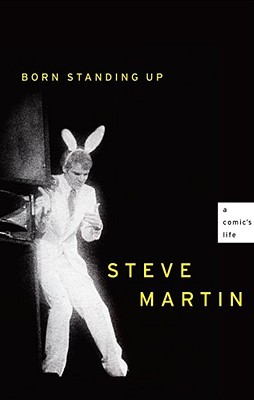 What a remarkable coincidence — Steve Martin and Diane Arbus crossing paths in front of the Sleeping Beauty Castle at Disneyland in 1962, he an old hand there (even at a young age) and she new to it. A classic moment of cultural overlap.
What a remarkable coincidence — Steve Martin and Diane Arbus crossing paths in front of the Sleeping Beauty Castle at Disneyland in 1962, he an old hand there (even at a young age) and she new to it. A classic moment of cultural overlap.
But Arbus didn’t work with a “large-format camera.” By the time she made that image she’d moved from the 35mm Leica to the twin-lens reflex, as indicated by the square format of that negative. Her Rolleiflex was as large as her format got. And Martin, long a collector of contemporary art and photography, numbering more than few photographers among his friends and acquaintances since his teens, as he indicates, must know the difference. If he did see a woman using a large-format camera that day, it assuredly wasn’t Arbus.
Then there’s the chronology. The standard date given for “A castle in Disneyland, Cal.” is 1962; we have no reason to doubt its accuracy. According to the preceding paragraph of Martin’s account, however, this intersection with Arbus took place after Martin graduated high school, entered Santa Ana Junior College, auditioned successfully for a position at Knott’s Berry Farm, and quit his Disneyland gig to take that new job.
But Martin didn’t graduate from Garden Grove High School until spring of 1963. So he didn’t enter Santa Ana Junior College till fall of that year — a year after Arbus made her Disneyland image. And he gives his meager salary at Knott’s Berry Farm in 1963 dollars. Which leads me to conclude that he’s invented the whole episode about watching Arbus at the moment of that exposure.
Maybe this story will boost the auction price of Martin’s print in the secondary market. It certainly made a resonant anecdote. Until what I know triggered my doubts, leading to this bit of basic research. At which point those reservations colored what I’d read up till then, and everything that came after.
See what I mean?
Knowing too much infects everything from watching tall, handsome Keith Carradine play E. J. Bellocq in Louis Malle’s 1978 film Pretty Baby (while remembering that Bellocq was a hydrocephalic dwarf) to reading John Berger’s typically eloquent paean to Pentti Sammallahti’s mystical relationship to the dogs in his photographs (while knowing that this Finnish photographer uses sardine oil to attract them into his camera’s field of vision and hold them there). One big spoiler alert, in short.
Selfies with the Dead
Those edgy Puerto Rican surrealists keep pushing the envelope. Earlier this year, I wrote about the bizarre January 2014 “thematic wake” of murdered Puerto Rican boxer Christopher Rivera Amaro, in which, at the family’s request, a mortuary in San Juan presented the cadaver, tricked out in its former occupant’s boxing outfit, standing up in a makeshift boxing ring, so that mourners could include the corpse in their selfies.
This wasn’t a one-shot idea. As a follow-up to the Rivera event, “An 80-year-old Puerto Rican woman has been memorialized at her wake sitting in her favorite rocking chair and wearing her old wedding gown” by the same mortuary, Marin Funeral Home. “The body of Georgina Chervony Lloren was propped up in her red-cushioned rocking chair Monday and wearing the gown from her second marriage 32 years ago. She was surrounded by plants and flowers. Her daughter, Miriam Chervony, said her mother specified that this was how she imagined her wake. She died Sunday,” according to the May 26 Fox News account.
Turns out the installation artists at Marin Funeral Home have a substantial track record for these stagings. The earliest I could find dates from August 2008, when they premiered 24-year-old Angel Luis Pantoja Medina — “shot 11 times, twice in the face, and tossed over a bridge in his underwear” — on his feet, dressed in his street clothes, tied to a wall, at his wake for three days. (This involved the mortuary’s use of “a special embalming treatment.”) Visitors nicknamed him el muerto parao — dead man standing. (Click here for the Los Angeles Times report.)
Then, on April 26, 2010, they presented 22-year-old David Morales Colón, killed in a shooting, posed crouching on his motorcycle. (Click here for a news story and video clip.) Soon thereafter, on July 9th, 2010, they posed an unnamed paramedic in his ambulance. (Click here for a YouTube video.)
In July 2011 they succeeded in an apparent first effort at outdoor siting, placing the corpse of Carlos Market Cabrera seated “on a table located under a tent in the field under the San Jose community Reservoir in Hato Rey,” accessorized with a beret, dark glasses, and a snuff box. (No photos or video available, alas, only this report.) There followed an unexplained hiatus until the proprietor of the Marin Funeral Home, Damaris Marin, and his team resumed their project with the Rivera piece earlier this year.
Meanwhile, this concept started to catch on elsewhere; perhaps this marks the return of postmortem photography to popular culture. The 2011 “Last Ride,” a 140-minute performance and installation staged in Philadelphia, “was inspired by the work of the Marin Funeral Home,” according to the artist, Andria Morales. On July 19, 2012, “Uncle” Lionel Batiste, New Orleans jazz drummer and man about town, dressed to the nines at his wake, leaning on a lamppost and holding his trademark cane.
On February 1, 2014, the family of an 82-year-old Ohio biker “fulfilled his dying wish by burying him astride his beloved Harley-Davidson in a see-through casket. Dressed in his leathers and sunglasses, and sitting on top of his 1967 Electra Glide cruiser, Billy Standley, who died on Sunday, was taken for one last ride.” (Click here for the Patryn World News report.)
And, this April, New Orleans socialite Mickey Easterling, at her wake in the Big Easy’s Saenger Theater, presided over the doings “amid a garden tableau resembling her own backyard, sitting with a glass of champagne in her hand, a pink boa swathing her neck.” (Click here for news story and slideshow.) Think of it as Joel-Peter Witkin going mainstream.
This melding of vernacular and fine-art photography, marrying as it does the directorial impulse, the funerary or postmortem image, and the “selfie,” speaks to a growing appetite for the spectacular not just in our lives but in our deaths as well. This becomes ever more elaborate and orgiastic, whether it takes the form of suicide bombing, senseless slaughter by deranged gunmen in our schools and other public places, or the demonstrations of mass hysteria following the accidental demise of “the people’s princess.”
Given our obsession with celebrities like Kim Kardashian and Kanye West, their demonstrable flair for spectacle, and the increasing explicitness of his music and music videos, we can not only relish the recent nuptials of Kimye but anticipate, upon their shuffling off the coil, a chance to see them stuffed and, if not mounted, at least holding hands. And, even if on a lower budget, we can opt to go out the same ways ourselves.
Working Definition
Not too far off-topic, I commend to your attention “Verbatim: What Is a Photocopier?” This short video from the New York Times dramatizes, word for word, an excerpt from the legal transcript of an Ohio Supreme Court deposition. It’s part of “a series … that transforms verbatim (word for word) legal transcripts into dramatic, and often comedic, performances … re-creations of actual events from the halls of law and government.”
•
This post supported by a donation from the Estate of Lyle Bongé.



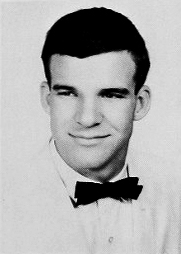
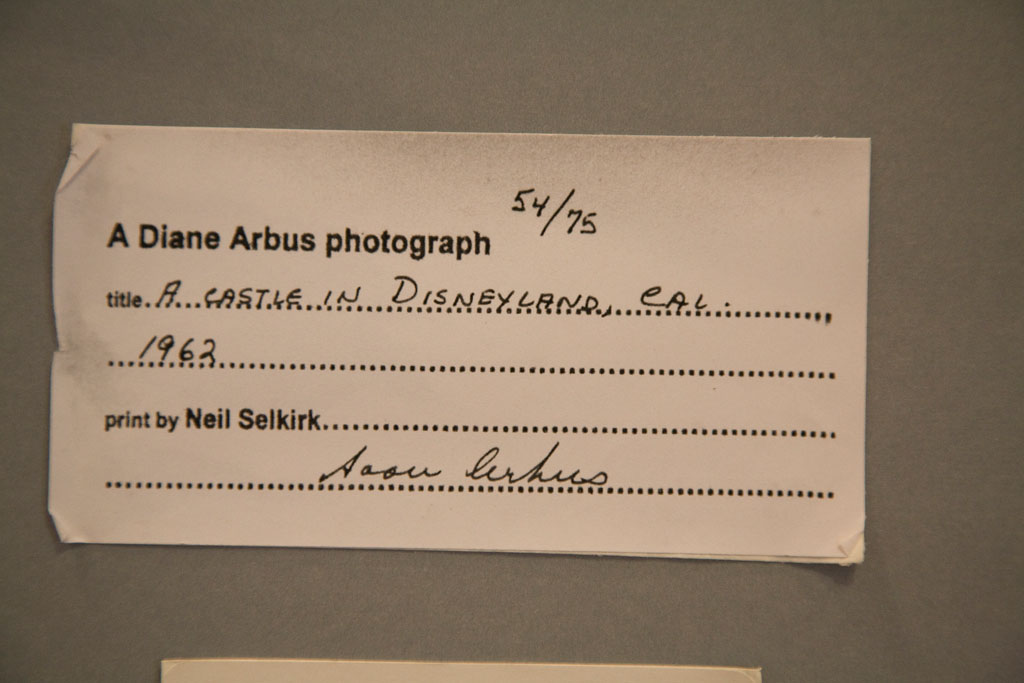
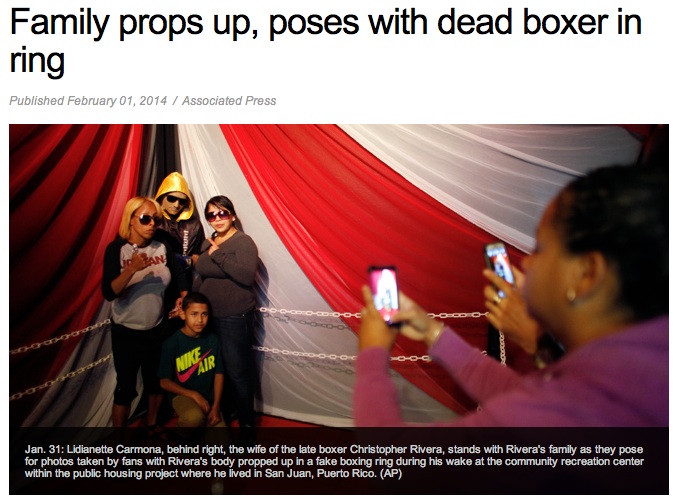
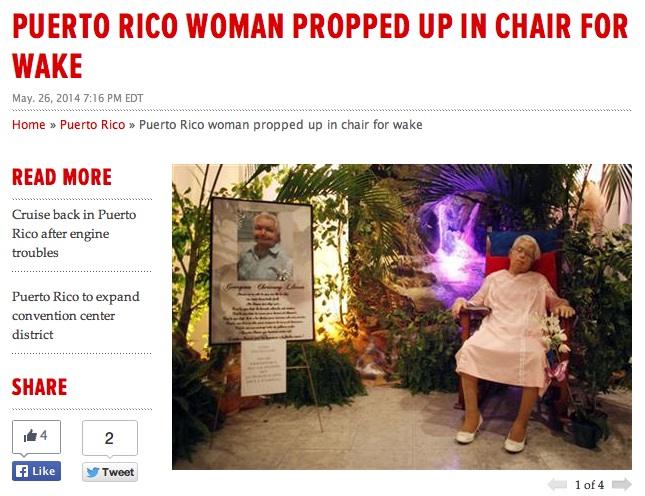
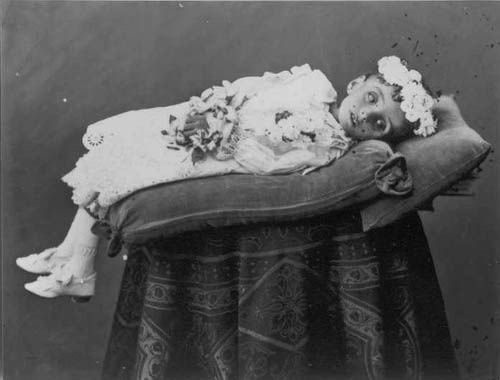
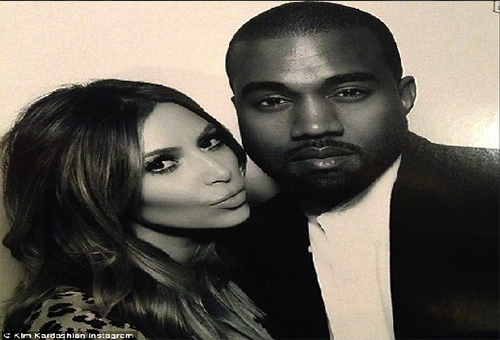




Dear Allan,
This a very interesting post/subject….I just returned from attending my aunt’s wake and funeral in NJ and was impressed with the latest use of digital technology by the funeral home. They put together a video of my aunt’s life using photographs and music on a loop, running on two discreet TVs.
As well, I’ve been looking at a lot of 19th century postmortem photos of children (which I can’t afford). Many collectors of these touching and often macabre images. Since photography is now ubiquitous, postmortem images are a lost artform…..now being replaced by Md. Tossaud type theatrics. Kinda creepy.
XXX, Cols
In the recent post “Legends” at his Re: PHOTO blog, Peter Marshall has some relevant comments about this post and some kind words to say about this blog as a whole. Much appreciated.